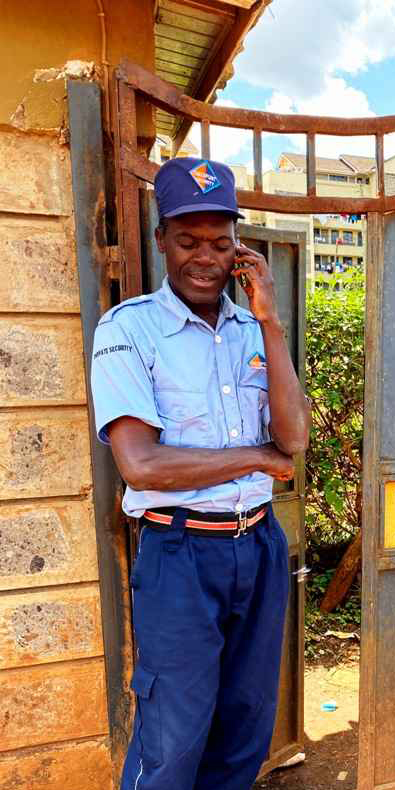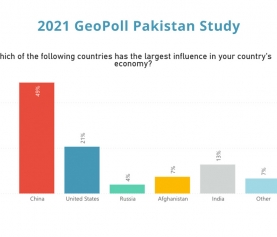 Despite the technological innovations seen in the research industry over the past years, many researchers have been hesitant to adapt to new methods of data collection, preferring to stick with traditional methods such as in-person interviews which have been tested at length. This is especially the case in the countries in Africa, Asia, and Latin America where GeoPoll works. Even with a growth in mobile penetration in countries such as Nigeria and Kenya, not all researchers operating in these regions have accepted research methodologies such as SMS and voice calls.
Despite the technological innovations seen in the research industry over the past years, many researchers have been hesitant to adapt to new methods of data collection, preferring to stick with traditional methods such as in-person interviews which have been tested at length. This is especially the case in the countries in Africa, Asia, and Latin America where GeoPoll works. Even with a growth in mobile penetration in countries such as Nigeria and Kenya, not all researchers operating in these regions have accepted research methodologies such as SMS and voice calls.
Organizations such as the World Bank and the World Food Programme have been ahead of the curve, testing how different mobile methodologies compare to traditional face-to-face methods, or providing respondents recruited in-person with mobile phones for follow up studies. Others have used remote methodologies when in-person data collection was inadvisable, such as during the 2014-2015 West African Ebola outbreak, but have primarily relied on in-person methodologies where possible.
As the COVID-19 outbreak continues it is clear that for researchers, coronavirus may represent a tipping point in the adoption of remote research methods. Even with precautions in place, face-to-face interactions put both interviewers and respondents at higher risk of contracting a devastating virus, and yet there is a pressing need for data on both COVID-19 itself and the impact it will have across countries and sectors. The question has become not if researchers will need to transition to remote-based methodologies, but how we as a research community can make the most of this unanticipated shift to remote data collection.
Mobile-Based Research in Emerging Regions: Where We are Now
When GeoPoll began offering surveys via 2-way SMS in 2012, we encountered obstacles surrounding not only the buildout of our platform, but also a resistance to the idea that reliable, valid research could be conducted through remote surveys administered through mobile phones. Entering the industry as a mobile technology company, we did not recognize all the nuances and biases of gathering data through methodologies which had not yet been tested at scale.
We overcame questions surrounding the representativeness and quality of data collected through mobile by implementing strict quality control systems and running research experiments that expanded our knowledge of the strengths and weaknesses of various mobile modes. One study we conducted found that select-all-that-apply style questions have a lower number of responses in SMS than forced-choice questions, while another found that drop-off rates increase for SMS questionnaires as they get longer.
Studies by other organizations have examined response and completion rates, and the sample skew of various modes. Research on mobile samples has found that mobile phone owners tend to be more educated than general populations, and that the population reached varies depending on the mode uses. Studies have also looked at how to improve SMS opt-in rates, finding that higher incentives don’t lead to higher response rates, but that sending reminders can improve the participation of older and less educated respondents. The World Food Programme has shown that mobile surveys can accurately demonstrate food security trends at a lower cost than face-to-face interviews, and The World Bank has conducted various studies during health crisis or conflict which demonstrate the usefulness of mobile surveys especially during rapid-response situations.
The Future of Mobile-Based Research in Emerging Region
Although mobile-based research in countries in Africa, Asia, and Latin America has increased in the past few years, it has often supplemented in-person research. For fully-mobile studies such as those being conducted during COVID-19, Computer Assisted Telephone Interviewing or CATI, live voice calls conducted from a call center or remotely, has emerged as a favored mode as it allows for longer interviews than SMS, is interviewer-administered, and can reach illiterate populations.
While limited research is available that directly compares results from CATI studies to face-to-face research, studies have found CATI to have higher response rates than other mobile modes, and that CATI is better at reaching older populations than SMS or IVR, an automated voice-call method. During COVID-19, CATI is being used by multiple academic and governmental groups who are looking to balance the need for remote data collection with research requirements. GeoPoll itself has seen a huge increase in demand for CATI surveys, resulting in the completion of nearly 100,000 CATI interviews in the month of July alone.
In research, there is often a fear of the unknown, but the benefits of remote data collection – namely the relative speed, wide reach, and relatively low cost – often outweigh the methodological challenges. During a time when in-person research is impossible, researchers have the ability to test these methods at scale so they can be used not only during times of crisis, but incorporated as part of a viable research approach in all projects. Research is ever-evolving, and at a moment when many are being forced to experiment with new methods, we have the opportunity to document learnings that will benefit the industry even after the pandemic has subsided.





